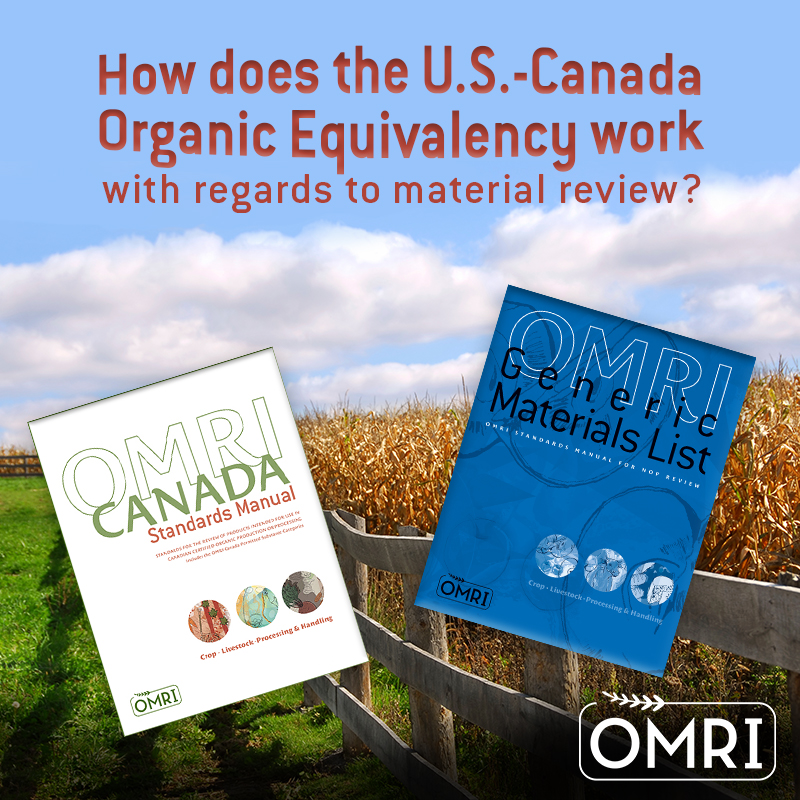U.S.-Canada Equivalency
 Can I use alfalfa meal that was certified organic in the United States as a feed ingredient for use in Canada?
Can I use alfalfa meal that was certified organic in the United States as a feed ingredient for use in Canada?
By Sara Nienaber
The Canadian Organic Standards require operators to provide livestock with an organic feed ration (CAN/CGSB 32.310-2020 §6.4.1), and operators are prohibited from using feed and feed additives that are not listed in Table 5.2 of CAN/CGSB 32.311 (CAN/CGSB 32.310-2020 §6.4.4). Many of the agricultural materials allowed on Table 5.2 must be of organic origin. For example, energy feeds, forage concentrates and roughages must be from organic sources. On the other hand, fillers and carriers used in vitamin or mineral premixes do not need to be organic, even if they are of agricultural origin (such as rice hulls). Whether an ingredient is required to be organic depends on how it is used. In this case, alfalfa will likely be used as an energy feed and roughage, and therefore be required to be organic.
The U.S. and Canada have different organic standards: the USDA organic standards (NOP), and the Canada Organic Regime (COR), respectively. Products that are certified organic in the U.S. do not necessarily meet the Canadian requirements for organic livestock feed. However, in June 2009, Canada and the United States signed the U.S.-Canada Organic Equivalence Agreement (USCOEA), ensuring that most organic products can be sold as organic in both countries. Rather than requiring an operation to be certified twice (to both the COR and NOP standards), this allows certifiers to simply affirm that a product meets the terms of the equivalency agreement.
To provide this affirmation, certifying agents are required to include the attestation “Certified in compliance with the terms of the U.S.-Canada Organic Equivalency Arrangement” on the organic certificate. This language may be present on the organic certificate itself, included as an addendum to the organic certificate, or printed on the bill of lading or other customs documentation.
To qualify for equivalency documentation, products must meet the critical variances of the USCOEA. Products produced in compliance with the NOP standards must be produced without sodium nitrate, and may not be produced via hydroponic or aeroponic methods. Agricultural products from animals (except ruminants) must comply with the stocking rates as outlined in CAN/CGSB32.310.
Conversely, the major variance for products produced in Canada for export to the U.S. is that agricultural products from livestock treated with antibiotics cannot be marketed as “organic”.
If you would like to use a U.S. certified organic alfalfa meal in your feed ingredient reviewed by OMRI to the Canadian standards, staff will request that you submit equivalency documentation along with the organic certificate for this ingredient. Without proper documentation of equivalency, OMRI staff would not consider this material to be certified organic to the COR standard, and therefore it would not be a compliant feed ingredient, unless used for a few specific purposes, such as a vitamin premix carrier.
This article was originally published in the summer 2017 edition of the OMRI Materials Review newsletter, and was reviewed and updated in March 2021 by Senior Technical Coordinator Peter Bungum.








